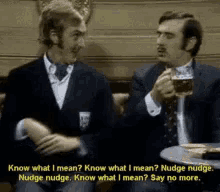key: C ionian
mode: C D E F G A B
melody: S L t d r m f s
form: verse-chorus
meter: duple
English function names: tonic supertonic
Tagg (modified): home counterpoise (away)
Riemann: T Sp
Scale degrees: I ii
Chords: C Dm C Dm
|:/ / / / |/ / / / :| loopThe guiro. Need I say more?
Okay, I suppose I do, otherwise, it's just a playlist and not a blog with a theme.1 This is a love song that is not for kids so much, the sexual undertones in the lyrics being rather obvious. We are not hearing anything earth-shattering in the form or the melody. We have a nice loop creating a sense of a state of being, rather than a goal that we're moving toward, although the singer/narrator clearly has a goal in mind, nudge nudge, wink wink, say no more.2 Let's talk a bit about the rhythmic and metric feel of this loop.
It could be notated this way:
C Dm
|:/ / / / :| loopAnd then we have to ask, well, which is it? Do we have two macrobeats per chord or one macrobeat per chord? The answer, of course is both. It's both because ultimately the sense of beat functions is subjective. One person's microbeat is another person's subdivision. This makes theory hard, it makes teaching hard, it makes notation hard. We love to have clear cut ideas about all of these things because it makes our lives easier. We can say it's duple, unequivocally, because no matter how you slice it every function in this song is clearly in a 2:1 relationship. So then it becomes a question of tempo, in a sense: How fast is the microbeat? How often is the macrobeat? And it many ways, it's really only a problem when it comes time to notate it, which, of course, you are never obliged to do. But it's worth understanding that people are going to perceive the same things differently and that both realities can be true.3
I'll leave it to someone else to start a guiro-themed blog. Please let me know if you have one or know of one already.





Always loved this song